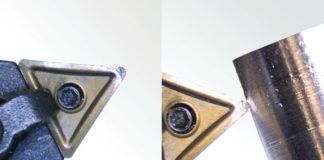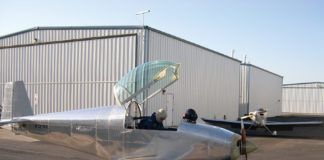Many of us go beyond the minimums. The FAR 91.205 tells us that we must equip our aircraft with a number of engine instruments: a tachometer, oil pressure, fuel level and manifold pressure for “altitude engines.” Thats it. Most builders today opt for much more. From the middle of the range to the top, we see sophisticated engine monitoring equipment as part of new installations at every turn. (For the lower-priced aircraft there are still good “steam gauge” alternatives that well cover later this year.)
What constitutes modern engine monitoring? For the purposes of this discussion, it amounts to a single-box collection of all the major temperatures, pressures and levels to be sensed in the aircraft: engine speed, manifold pressure, oil temperature and pressure, fuel pressure, cylinder-head and exhaust-gas temps all make up the basics.
Todays top-end engine monitors do more. Most will calculate percent of power (assuming they have an outside air temperature and altitude input); most have or can be fitted with an accurate fuel-flow module that provides mind-easing consumption figures; all of the good ones have some form of alarm for out-of-range indications; and the best ones all have integrated data logging.
Inevitably the question commonly asked of avionics shops is: “Which engine monitor is best?” Like everything else regarding modern planes, there is rarely a single system that is a panacea for everyone. The choice depends on a number of factors, which well examine in the following pages.
Thoughts on a Budget
Engine monitoring systems are available for nearly every budget, and you might be surprised to know that they’re often as cheap, or even cheaper than purchasing analog gauges. And more reliable. Whats the first thing you do to a round gauge that you suspect is not working properly? You reach up and tap it, of course! Don’t deny it. We’ve all been guilty of randomly tapping a round gauge with some sort of dumb hope that whatever its telling us will either change when we bang it or suddenly start working again. Modern analog gauges are much better, but the mechanical works have proven more failure prone.
Aside from being reliable, these systems are extremely flexible. By flexible we mean that users have the ability to change the parameters or settings within their engine monitor as their needs change. When your engine is brand new you may want to leave the CHT upper limits set a little higher than you would after the engine is broken in. Also, if you were to change from a carbureted engine, youd want the ability to reset the fuel pressure limits. You may also want to tweak the settings after you become more comfortable with your engine and its unique characteristics.
They’re More Accurate, Too
The ability of digital instruments to respond to small changes in the systems they measure and monitor is typically many times more sensitive than their analog brethren. As an example, a friend of mine recently noticed a tiny change in EGT and CHT readings (less than 10 F). This led to the discovery of a small issue with his cylinder, which was caught long before it could develop into a problem. Such details are not easy to read on a round analog scale.
Typical scales for measurement within engine monitors are usually to multiple decimal points. While this may seem pointless to some, consider that voltages are often measured in such increments. For example, the optimal charging voltage for our plane should normally be 13.8 volts. Sure, its close to 14, but then its hard to tell between 13 and 15 on a round scale.
Three Rules for Buying
Rule Number One. Thou shall not think you need backups for your engine monitor. This year Ive been inundated with people who think they need a backup tachometer, manifold pressure gauge, oil pressure or oil temp, etc. The fact is that if your engine monitor quits, it does not cause the engine to stop turning. Get home or get on the ground and fix your engine monitor. Backup engine gauges only add cost and complexity, and all the extra sensors and plumbing can actually be failure points that reduce overall reliability.
Rule Number Two. Thou shall consider the flight instruments or other systems you’ll be installing when choosing an engine monitor. If you are remotely considering an EFIS or digital instruments, many/most EFIS manufacturers also offer engine monitoring functionality that integrates nicely with the EFIS. The benefits are many, so its worth taking the time to consider the entire package, not just single instruments.
Rule Number Three. Thou shall not consider functions you con’t need when selecting an engine monitor. Basically, don’t over buy. If your plane has a simple engine, is an ultralight, or the airframe is basic, you don’t neefd lots of advanced features. Purchase according to the systems actually in the airplane. I am a huge advocate of engine monitors, just not with more features than you need.
Now lets have a look at the primary offerings in the field. For this roundup, we have omitted partial or “blind” engine monitors that must work with an EFIS or other display to be functional; all of these are standalone units, but many may be integrated with avionics for additional features.
Advanced Flight Systems
In the past year AFS has been busy. The company has shipped many AF-3400 and AF-3500 series engine monitors, which can also be combined with an EFIS in the same box. AFS has introduced several unique features. The company’s graphical weight-and-balance screen is one of the most intuitive and simple creations you’ll see.
AFS is one of the few available systems with a front-facing SD memory card slot that allows for fast and easy retrieval of data. The various parameters displayed on the screens are easily changed, and one of the most powerful options allows the user to set the ranges of each. This allows you to “line up” the various systems for an easy and intuitive look.
Newly released is a screen/program in the engine monitor called the Interactive Aircraft Maintenance Page. The user is able to enter a variety of maintenance tasks and the time interval, and the engine monitor tracks them for you. For example, you can set up oil changes for every 25 hours, and the system will track this and notify you when ones due.
Pros: Definitely market leading graphics, best of class functionality, most complete package of probes/sensors and harnesses available. The company is owned by homebuilders.
Cons: Not many-only that they are so popular that demand is outpacing supply, so there are short delays in shipments of product.Dynon Avionics
Dynon started a revolution in low-cost, color graphical engine monitors available to homebuilders with the EMS-D10A a few years ago. This nifty little box fits easily into a 3.125-inch instrument whole, but packs as many features as many of its larger competitors. Dynon added the larger EMS-D120 based on its larger screen EFIS and again provided a great product at a reasonable price. Its a hard product to beat, and even though it lacks some of the extra features the competitors offer, its still an excellent value. In addition to the usual assortment of engine parameters (plus up to six channels of EGT and CHT) and four fuel levels, the EMS series can read out things like flap and trim position, plus other “open” switched functions such as a canopy-open warning light. Overall, the EMS series is very flexible.
Moreover, Dynon has continued to improve the product. Recent developments include a percent-of-power calculator, improved lean-find detection and annunciation of rich-of-peak or lean-of-peak operation, plus internal data logging. (Finally! Ed.) The data logging doesn’t have the capacity of the other units that use external memory, and you still have to get the data out using a laptop computer at the scene, but the company says more is coming in future software releases.
New features this year include fuel-tank autodetect (tells the fuel computer the tank is full, in case the pilot forgets, which I frequently do), an analog fuel-flow dial indication, and minimum red line for tach and oil temp for engines such as the Rotax. In addition, Dynon has released a full bidirectional network, so the EMS works a lot more seamlessly with the company’s EFISes.
Pros: One of the best color engine monitors for the money. The EMS-D10A fits into a 3.125-inch instrument hole. Wiring harness and probe/sensor package is complete.
Cons: Screen brightness (lack thereof) in sunlight, fewer features/functionality than competitors, limited data logging capacity.
Electronics International
Electronics International has made a name for itself as one of the highest quality systems available. Most of its products are fully FAA TSOd (certified), and EI is one of the only companies to produce many of its own sensors. As an example, the EI fuel-flow sensor that is machined and anodized from solid aluminum is one of the highest quality units available on the market. Our experience with EI as a company is good.
Since the last installment of the our engine monitor roundup, nothing major has changed in the EI lineup. Its integrated engine monitor is the MVP-50, available for both piston and turbine applications. In addition to the usual temperatures and pressures monitored, the MVP-50 can read hydraulic pressure, instrument vacuum levels and a host of specialty items. Like the better monitors, the MVP-50 has integral data logging, with a bodacious amount of memory: The company claims more than 3300 hours at 30-second intervals; even at a more reasonable once-every-5-seconds rate, thats plenty of memory. The MVP-50 is a two-part system, with a remote sensor box that can be mounted to the cabin side of the firewall to reduce sensor wire length and help tidy up behind the panel.
Pros: High quality sensors, exceptional customer service.
Cons: Higher priced than competitors.
Grand Rapids Technologies
Grand Rapids has likely delivered more of its popular EIS (engine information systems) than all of the other companies combined, making it a stalwart in the industry. New for 2008 are higher resolution monitors. The large and high- resolution screens complement and integrate into GRT EFISes. With the newer systems GRT has provided more inputs such as the ability to monitor trim position, flap position, outside air temperature, multiple bus voltages, multiple bus current draw/amperages, and many more inputs. GRT is also one of the few companies designed to seamlessly work with the Aerosance FADEC system. GRT also outputs its engine data stream to third party systems such as the Vertical Power Management system, Chelton EFISes, TruTrak EFIS, and others.
Pros: Thousands of units in the field. Impeccable reliability record, decades of experience, knowledgeable staff, best of class pricing, company owned by homebuilders.
Cons: Not many, other than the somewhat dated display of the EIS series, now corrected with an optional machined overlay.
I-K Technologies
I-K is one of those companies that has a devoted following, and has staked out the low-cost end of the engine monitoring spectrum. The current lineup consists of five models that span the range from a simple engine monitor to a full-fledged system with pitot-static instrumentation (not really an EFIS because there are no attitude indications). All of the systems use a similar display philosophy. There are discrete numeric and graphical elements; the graphics are rectangular LEDs that permanently represent a certain parameter. That parameter is, therefore, always displayed, and its range can be discerned at a glance.
Those bar graphs are backed up by simple numeric displays, LEDs and/or an LCD dot-matrix screen for more precise data representation. When there are more channels monitored than displays, a button allows the pilot to scroll through them.
The one thing that could be considered a negative is that the basic parameters are programmed at the factory; there’s no changing, say, CHT alarm limits on the fly, as is possible with other monitors.
Pros: The “all in the green” display is intuitive to look at peripherally. Price point is good.
Cons: Less functionality than some competitors.
J.P. Instruments
Longtime engine-monitor developer J.P. Instruments continues to refine its all-in-one engine monitors, which are the EDM-900 and the EDM-930. The 900 uses an orange plasma display with the parameter scales printed on the front face. It measures all the primary variables including volts and amp, outside-air temp, fuel level and fuel flow. It can handle up to six EGTs and CHTs as well as two turbine-inlet temperature (TIT) channels. The EGT/CHT display is nearly identical to the bar graph used on the company’s popular EDM-700/800 series, with a “missing bar” denoting the CHT value for each cylinder.
More recent in the JPI lineup is the EDM-930, which uses a color LCD and therefore has much greater flexibility. The CHTs and EGTs are split into separate columns. All parameter scales and limits can be programmed outside the box and uploaded for use, so that each builder can create a custom set. Both the 900 and 930 will compute percent of power and will log engine data. Recent developments include a move to USB (from standard serial) connections for downloading recorded data.
Pros: Good flexibility in the 930 for a reasonable price.
Cons: Currently does not “talk to” EFIS systems.
MGL Avionics
The MGL Stratomaster series of instrumentation remains extremely popular. With the release of the new Enigma line, MGL offers a color display coupled with its EFIS systems. The rectangular-format E-2 engine monitor is tailor made for Rotax 912 installations-something that other monitors struggle with or simply don’t do well-with four EGTs and two CHTs (actually the coolant temp at opposite-corner cylinders). The E-3 is a new unit that fits into a 2.25-inch instrument hole. This unit has a new “rotary encoder” (knob) to help move through the menu system. We have not installed any of MGLs units in our shop, but the company has an excellent reputation, and seems to create new features almost daily. A 3.125-inch version of the E-3 is expected to debut sometime in 2008, according to the company.
Pros: Proven reliability, great customer support and value.
Cons: New generation of systems uses somewhat lower quality connectors.
SensorNetics
New to the market in the past year is a suite of instruments offered by SensorNetics of Ontario, Canada. Offering refreshing new instruments that are more than simple graphical engine monitors, SensorNetics has combined a compact, lightweight and extremely powerful engine monitor with a sleek and colorful graphical display.
The company offers a range of instruments from the SN1000-CC (compact color) to the SN1000 LC with an 8.4-inch display. The systems are priced without probes and sensors, but the company offers a variety of sensor packages to accommodate most popular engines.
One thing that sets the company apart from its competitors is the large number of extra inputs designed into the systems, which may be used to monitor not only engine functions, but an entire array of other items in the airplane such as landing gear, doors, canopy, pitot, etc. We haven’t had the opportunity to personally review these units, but after talking to the factory, its apparent the company is serious about its products.
Pros: Low cost, newer transreflective color displays and tremendous amount of room for growth with lots of extra inputs. Low cost is a bonus!
Cons: Relatively new, so reliability and operability (buttonology) are unknown.
Vision Microsystems
Vision Microsystems was an early pioneer in large-screen graphical engine monitors, and was also one of the first to receive FAA certification for a graphical engine monitor. The company was purchased by JPI in 2004 and suffered some early support issues. Those seem to be resolved. The two choices in the line are the original monochrome VM1000 and the new, color VM1000C. The VM1000C can be reprogrammed in the field with new limits and alarms, and both units support data logging. One bit of news is that JPI has switched the VM1000 lineup to its own grounded probes and sensors, which creates commonality for the manufacturer and better support for the customer.
Pros: Good size installed base, familiar to many pilots. Good price point. One of the few companies to have earned FAA certification on its products.
Cons: Doesn’t communicate with current EFISes.
Xerion
Xerion leaped into the market a couple years ago with its AuRACLE graphical engine monitor. Xerion is unique in the presentation of its display for throttle, prop and mixture, which represents a position of the lever or knob as opposed to the traditional copy of a round instrument. Xerion is also one of the few systems that has received FAA certification for installation into some certificated aircraft. As a standalone engine monitor the system appears to be of high quality. Two basic units are available, one that has the entire machine in the panel-mounted case and another with a remote sensor box. Note that you’ll need external fuel-level gauges.
Pros: Unique display, high quality, and now FAA certified.
Cons: Unique display, relatively new, somewhat expensive.













